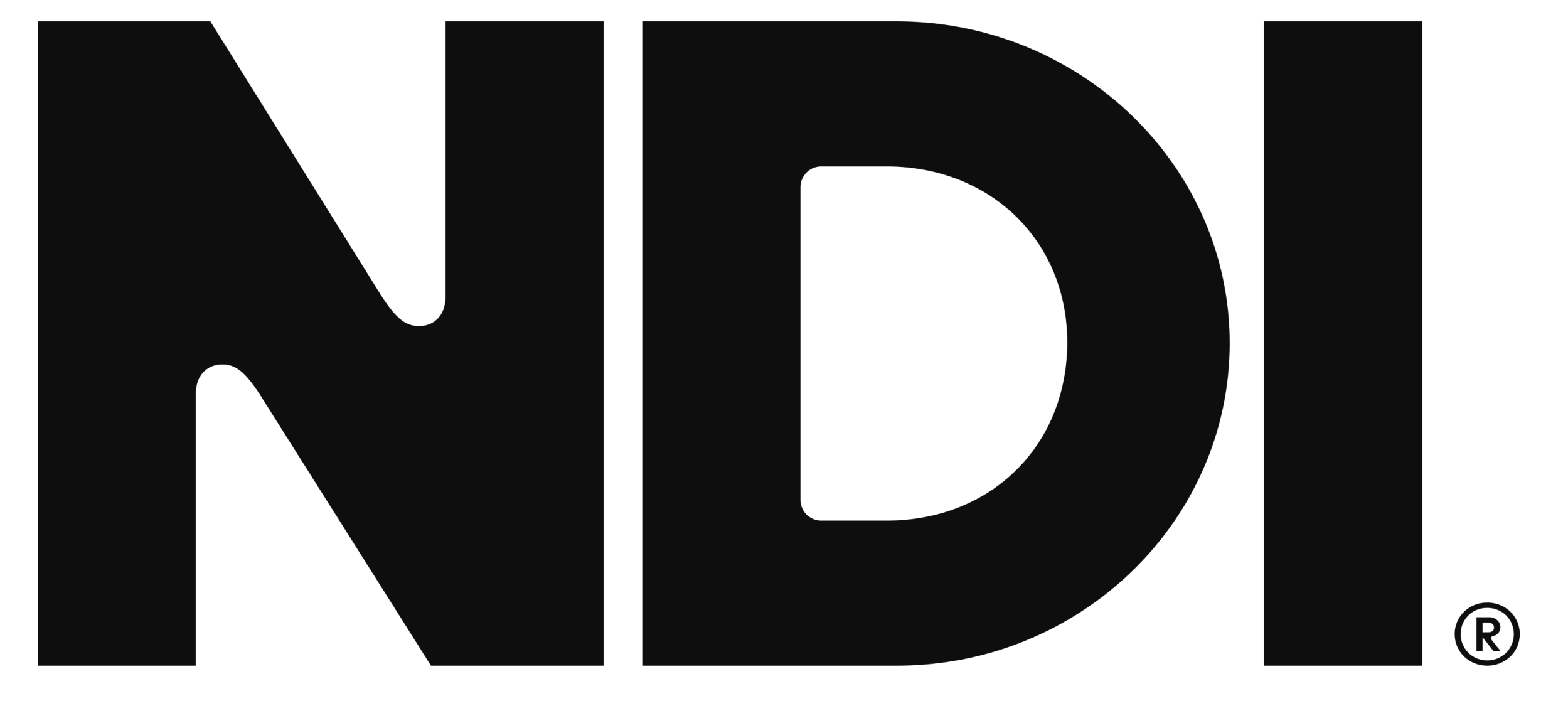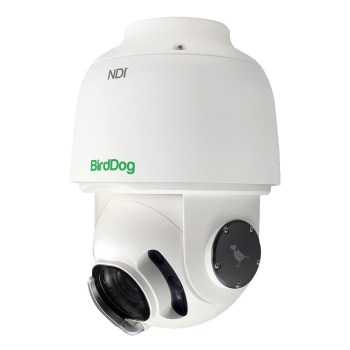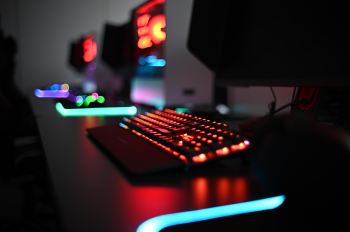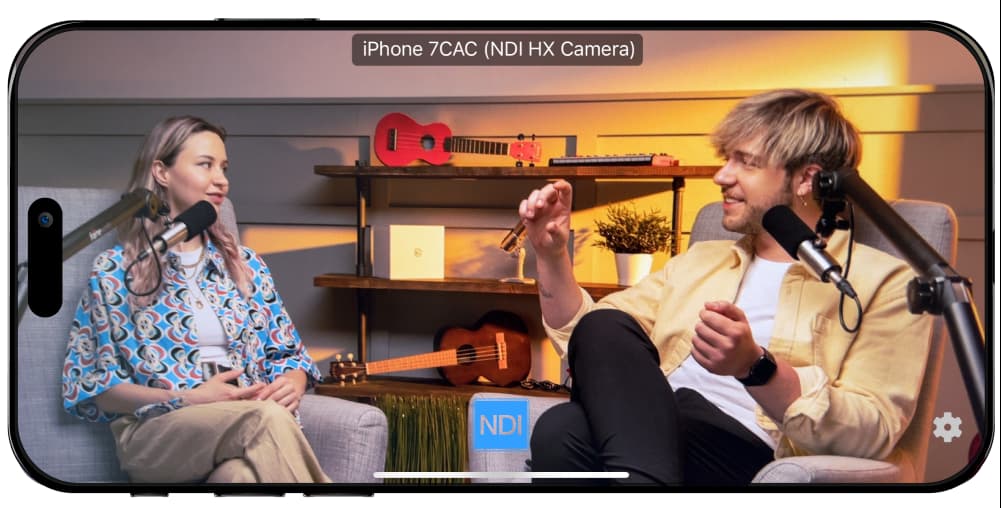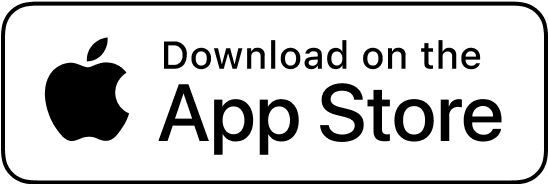University of the Arts London (UAL) is one of the world’s top art and design schools, and its Creative Computing Institute delivers seamless hybrid and remote learning to all its students. Without a dedicated AV team, the newly formed department used NDI technology to design and launch a flexible, reliable video learning system at the height of the COVID-19 pandemic. Delivering a working system in a matter of weeks, they established a culture of recording and streaming lectures to everyone’s benefit.
Challenge
Launched in 2019, UAL Creative Computing Institute (CCI) explores the intersection of art and technology, and Technical Manager Tom Lynch describes it as “a bit like a startup in higher education.”
Tasked with making education accessible to students who couldn’t attend class during the pandemic and beyond, Tom and his team required creative solutions and flexible technology. In a matter of weeks, they took CCI from using a set of TVs on a trolly to accessing a powerful video streaming and recording system that spans four buildings across London.
From the start, CCI faced a series of challenges unique to their learning environment:
- Limited space for AV equipment in buildings originally designed for fine arts education.
- Unconventional classroom setups with no place to hide massive wires and cables.
- Flexibility requirements in camera setup for different use cases (e.g., live-streaming student performances) that require multiple camera views.
- Streaming large amounts of data from live video capture, screencasts, and audio, while accessing multiple laptop applications.
- Need for off-site troubleshooting and repair across four buildings in different parts of London.
Given the pressure of launching during a pandemic and the staff’s limited AV experience, Tom and his team needed to work with intuitive solutions they could master and scale efficiently.
Tom Lynch, Technical ManagerWe had to be nimble and fast, despite working in a regulatory framework. We launched during a pandemic with no full-time AV experts on staff, and we were already attempting something relatively ambitious. We looked for flexible technology we could implement quickly and scale, iterating and improving solutions over and over again.

Solution
The Creative Computing Institute technical team turned to Tateside, a UK-based Systems Integrator, to guide the implementation and implement NDI-enabled BirdDog 4k HDMI, P120, and P200 cameras.
Shortly following the launch, NDI released a virtual webcam update that supported four cameras simultaneously, and Tom and his team jumped on the improvement. Lieven van Velthoven, a member of the team, built an in-house software called Bentham using the NDI SDK to keep frame rates consistent, delivering powerful capabilities to instructors and students.
“One reason we use NDI is that they’ve invested hugely in creating free tools. These tools do everything you need them to do,” says Tom.
As an educational program that fuses art with computer technology, Tom describes the capture and streaming requirements as “computationally expensive.”
For example, the team needed to be able to switch quickly between using Panopto and streaming to YouTube. NDI makes this possible with no repatching of cables. Instead, they can just plug in a laptop running some vision mixing software to grab the feeds.
These solutions meant that instructors could simply walk into the room and start their lectures without worrying about technology. They plug the cable into their laptop, and what they see on the TV monitor is what’s being recorded in the stream.
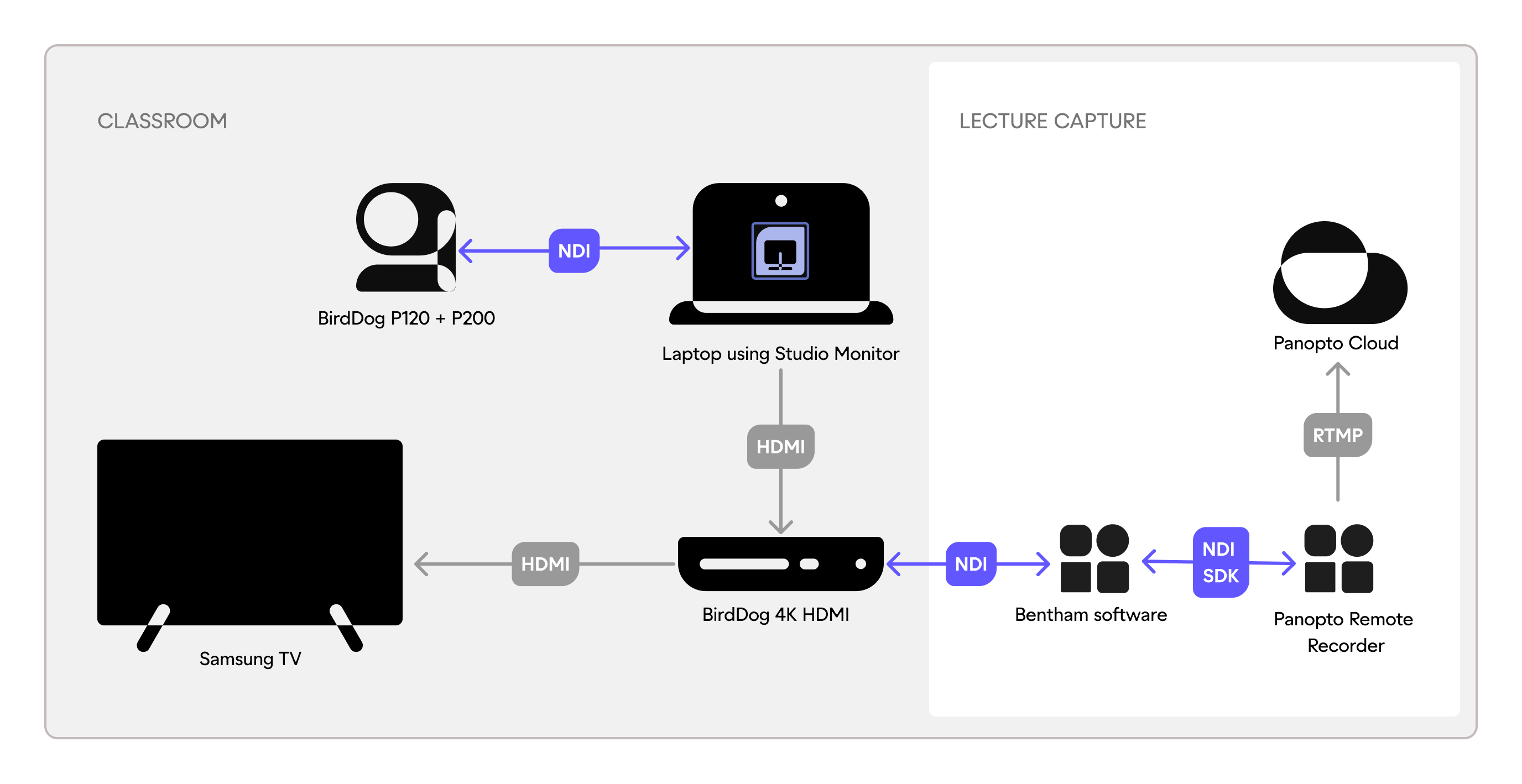
When technical glitches occasionally arise, Tom or a member of his team can diagnose them by inspecting each part of the audio and video chain, and they can almost always repair the problem remotely.
We could have gone with a traditional HDMI or SDI cabling system, but we’re in four buildings across London, and we don’t have an AV specialist in each. If there’s a problem, we can diagnose and fix it remotely.
Tom Lynch, Technical Manager
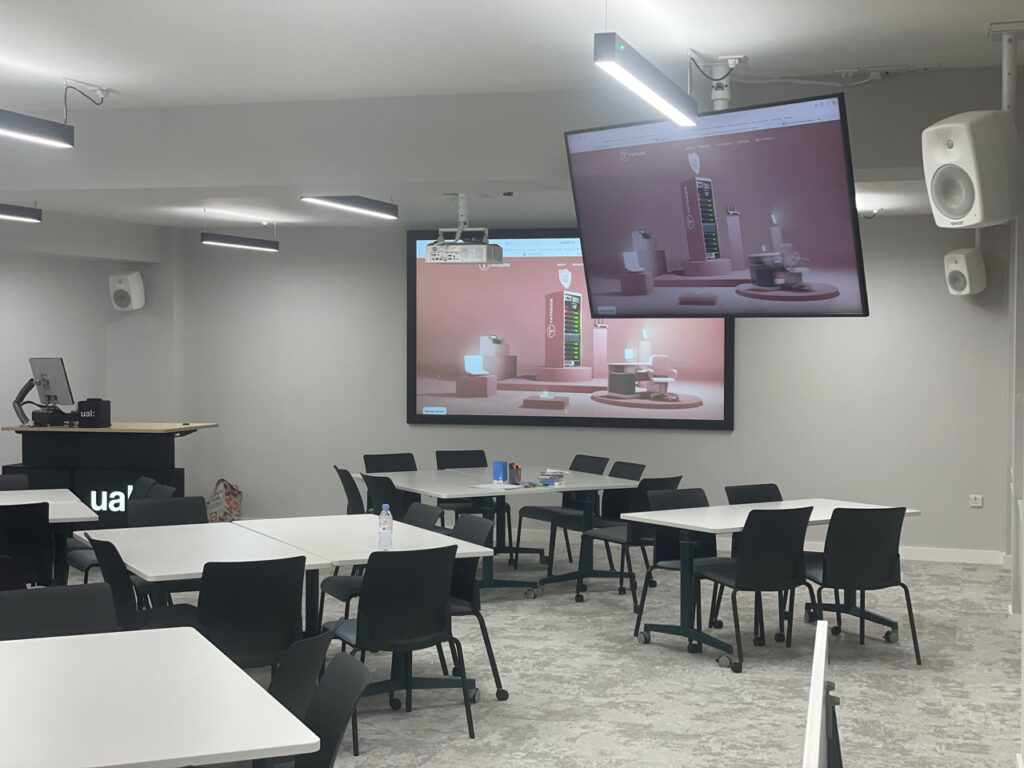
Outcome
By working with flexible technology, the Creative Computing Institute made streaming and recording the norm. Instructors can opt out of recording class sessions, but the vast majority have opted in. This greatly enhanced the educational experience during the pandemic and beyond.
Students and instructors provided positive feedback regarding the university’s remote learning capabilities, which included:
- Hassle-free streaming and recording.
- Excellent video and audio quality.
- Quick setup for special events.
- Access to recordings when students miss class or want to re-watch a lecture.
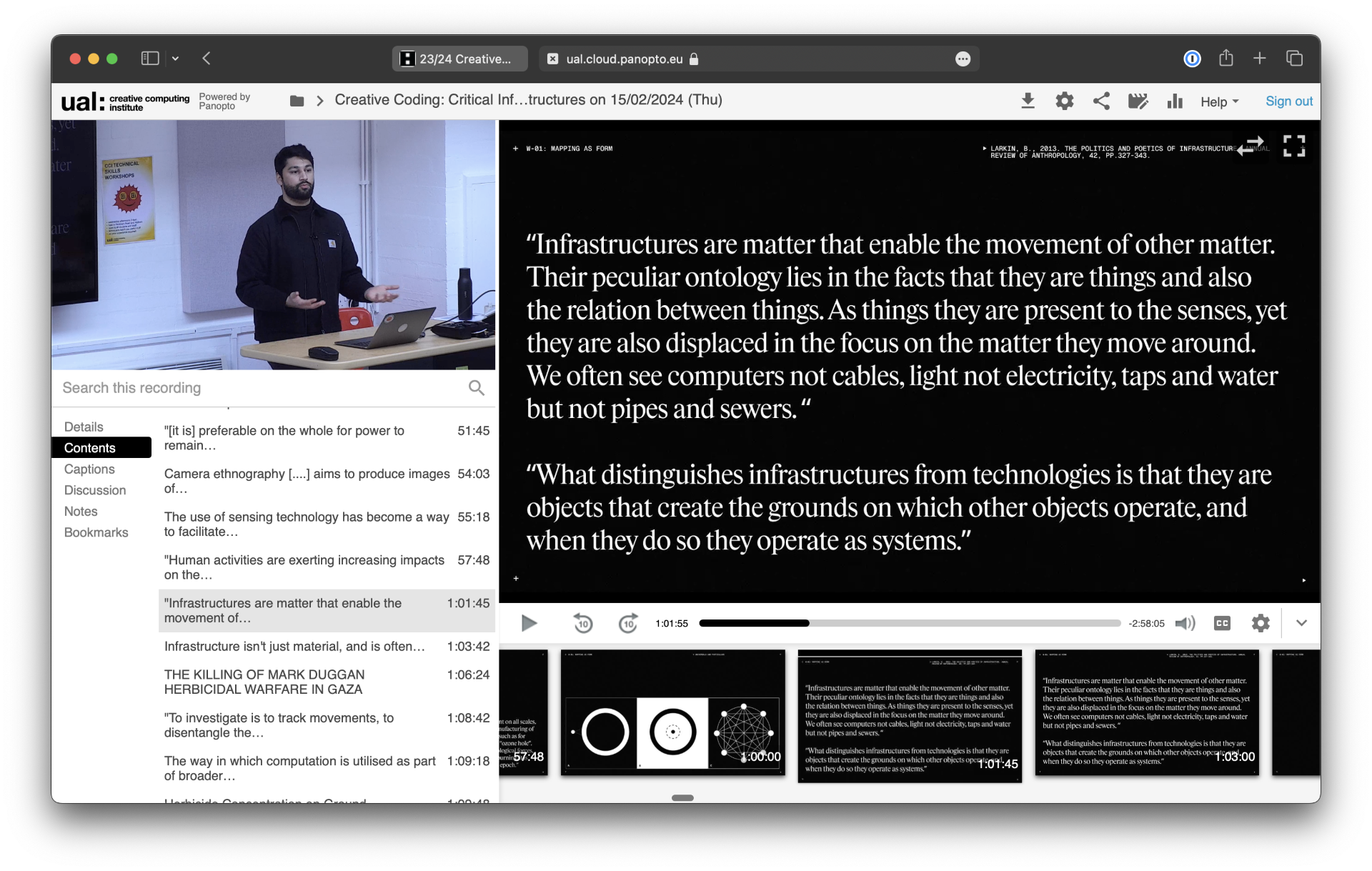
“Of course, the students aren’t aware that we’re using NDI, but they do experience that we have really good lecture capture and audio quality that works,” says Tom.
CCI’s cutting-edge approach to hybrid education enhanced the learning experience. In particular, English as a Second Language (ESL) students and students with disabilities benefited by being able to replay lectures for up to one year.
As an institution, UAL experienced the following benefits:
- Flexibility: Easy setup and remote troubleshooting capabilities meant that the technical team could achieve more with limited resources.
- Autonomy: NDI’s ease of use meant staff could handle challenges with limited AV knowledge and no need to hire full-time AV specialists.
- Efficiency: Special setups and ad hoc changes require minimal technical effort.
- Seamless experience for end-users: Instructors and students aren’t aware of the underlying technology, but many have noted the high image quality and ease of use.
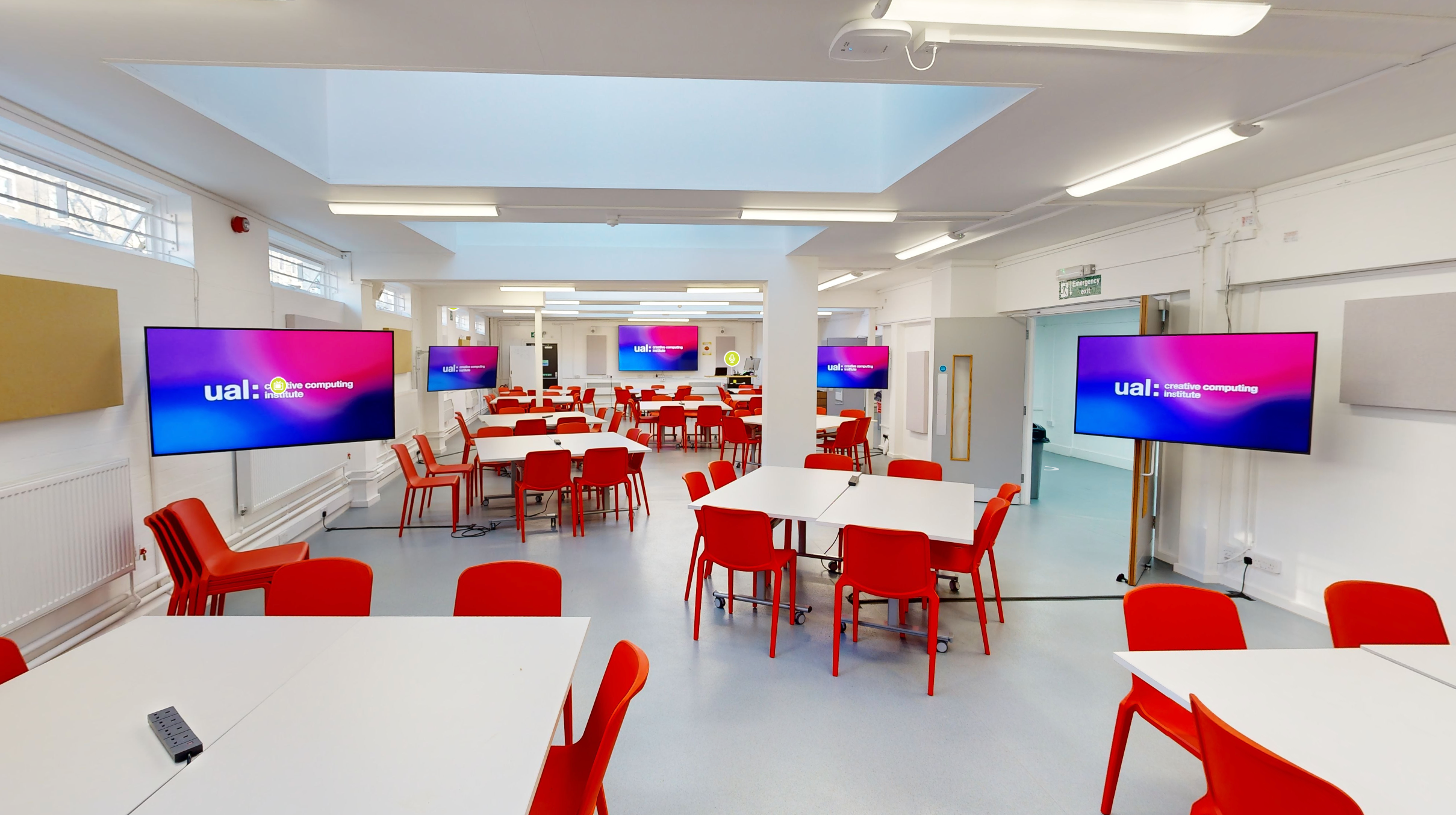
Taking a proactive, innovative approach to remote learning during the pandemic, UAL Creative Computing Institute established itself as a forward-thinking department, using cutting-edge technology to improve the lives of students, faculty, and staff.
NDI technology gives you real flexibility, and the underlying tech is basically invisible to the users. All they know is that it works, and as a technician it gives you a lot of flexibility.
Tom Lynch, Technical Manager
